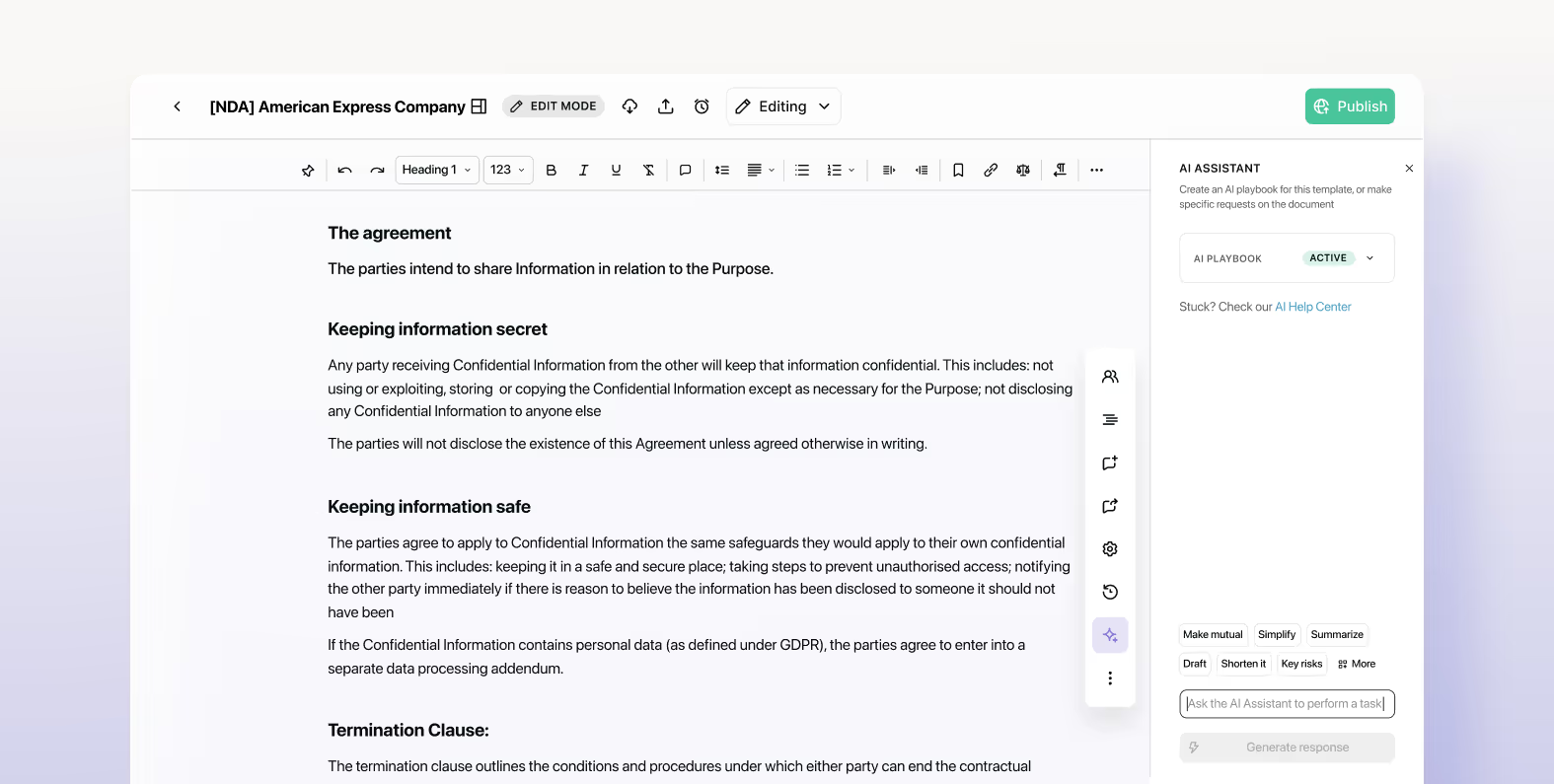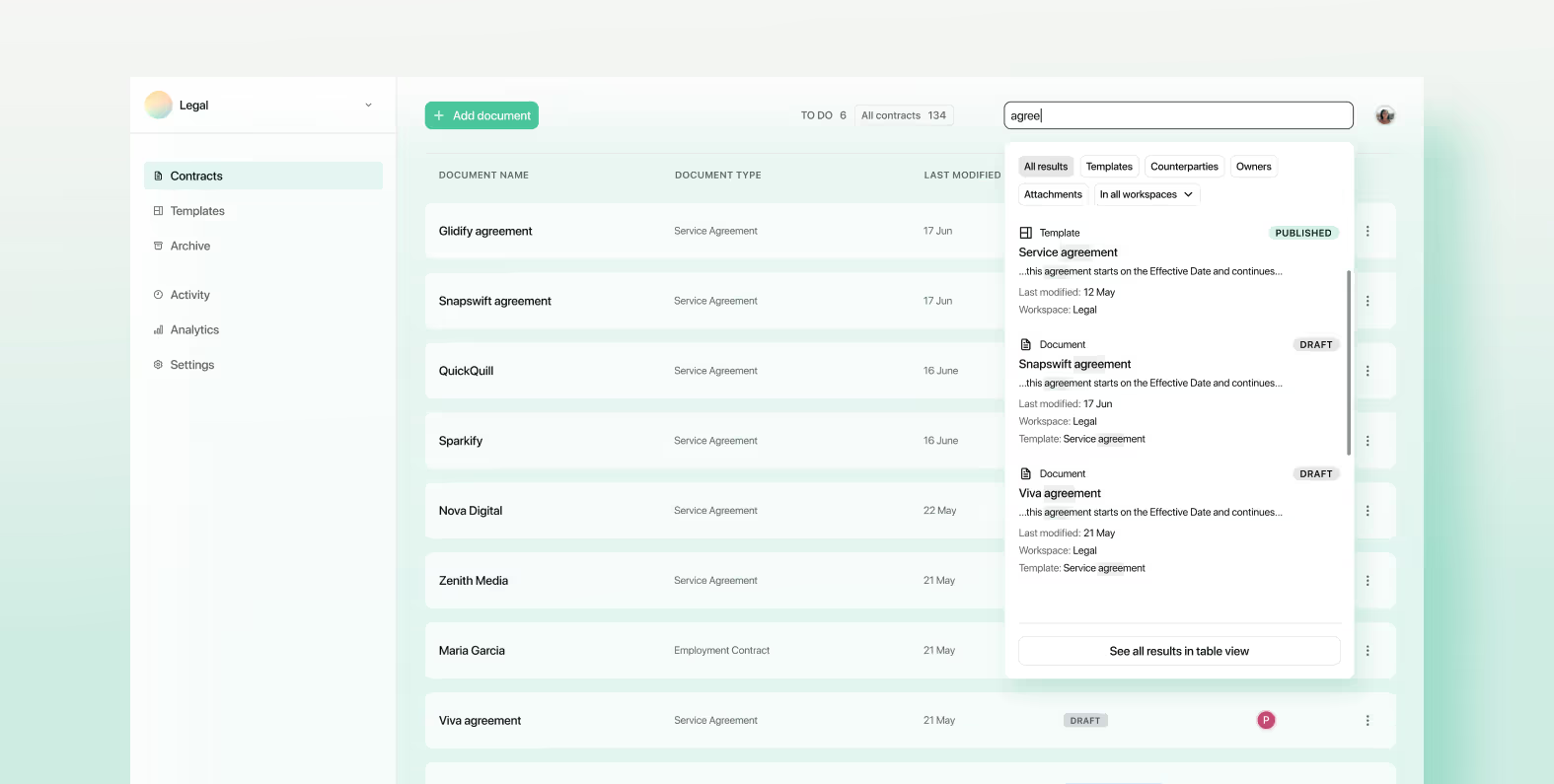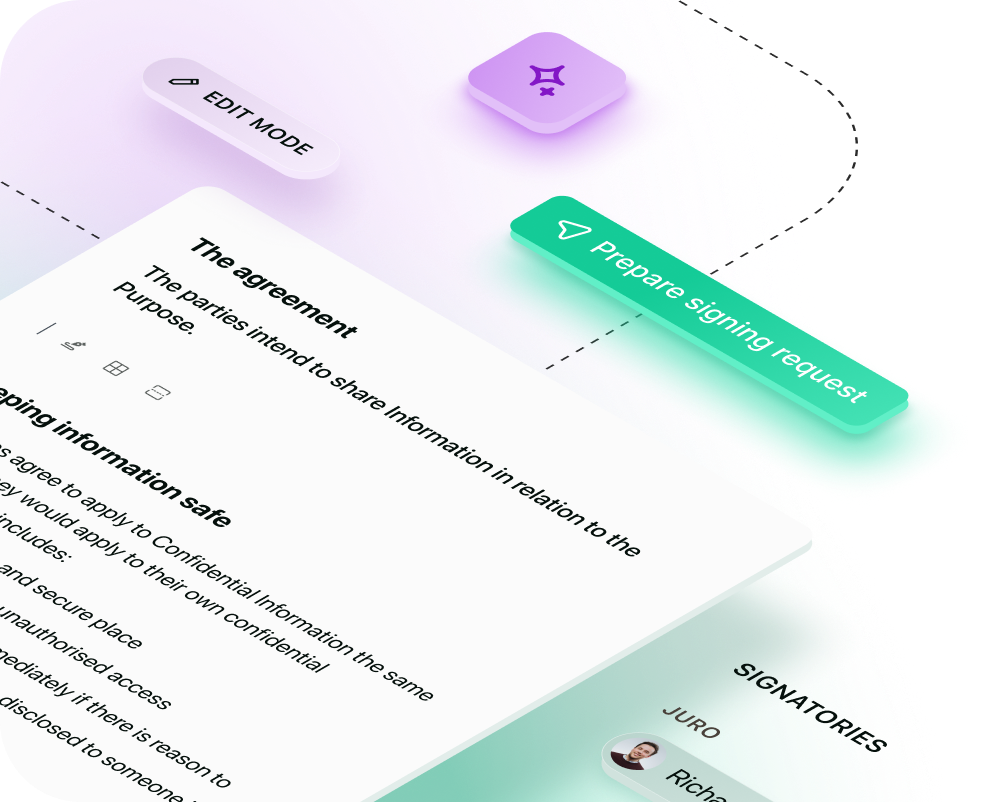Solutions
Customer Support
Resources
Our Illinois lease agreement template helps landlords and tenants create clear, compliant rental agreements, covering key terms like rent and security deposits.




In this article, we’ll explore what an Illinois lease agreement is, its purpose, who manages these contracts, and more. We’ll also discuss the challenges of managing these contracts and how Juro can help streamline the process.
An Illinois lease agreement is a legally binding contract between a landlord and a tenant that outlines the terms and conditions for renting residential or commercial property in Illinois. It specifies key details such as the length of the lease, the amount of rent, payment due dates, security deposits, maintenance responsibilities, and any other pertinent rules or regulations.
Several state-specific laws impact lease agreements in Illinois.
For residential leases, the Illinois Residential Landlord and Tenant Act is the primary governing legislation, providing detailed regulations on security deposits, lease disclosures, and tenant rights regarding repairs and habitability.
For commercial leases – while less regulated – the agreements still must adhere to the Illinois Commercial Code, which governs commercial transactions.
Local ordinances in cities like Chicago may also impose additional requirements, especially concerning security deposit handling and residential property standards.
An Illinois lease agreement is a legally binding contract between a landlord and a tenant, outlining the terms and conditions under which the tenant rents a property from the landlord. The purpose of this agreement includes:
By clearly outlining these aspects, an Illinois lease agreement helps foster a stable and predictable rental relationship, protecting the interests of both the landlord and the tenant.
Typically, landlords or property management companies are responsible for the initiation and management of lease agreements. Real estate attorneys may also be involved in drafting and reviewing the templates to ensure legal robustness and compliance with evolving laws.

These templates are versatile and cater to various leasing needs, including:
A robust template should cover several critical sections:
Landlord(s) and tenant(s). Full names of the individuals or entities entering into the lease agreement.
Contact information. Phone numbers, email addresses, and mailing addresses of both parties.
Rental property address. Specifies the exact location of the property being rented.
Property description. Type of property (e.g., apartment, house) and any specific features or amenities – like parking spaces, appliances, or common areas.
Lease term. Duration of the lease, including start and end dates, and move-in and move-out dates.
Rent payments. Monthly rent amount, the specific date it is due each month, and acceptable forms of payment (e.g. check, electronic transfer).
Security deposit. Amount of the security deposit, how it is to be held, and conditions for its return or deductions.
Late fees and penalties. Any fees or penalties for late or missed rent payments and the conditions under which these apply.
Maintenance and repair. The responsibilities of the tenant and landlord regarding property upkeep and repairs.
Utilities and services. Which utilities (e.g. water, electricity) and services (e.g. lawn care) are included in the rent and which are the tenant’s responsibility.
Pet policy. Whether pets are allowed, any restrictions, and any additional fees or deposits required.
Subletting and assignment. The conditions under which the tenant may sublet the property or assign the lease to another party.
Entry rights. The landlord’s right to enter the property, including required notice periods for non-emergency access.
Renewal or termination. The process for renewing the contract or ending it at the end of the term, including the required notice periods. Explains the terms under which the lease can be terminated early and any fees or penalties that may apply.
Appliances and furnishings. List of appliances or furnishings provided with the rental property.
Insurance requirements. Specifies any insurance the tenant is required to maintain, such as renter’s insurance.
Signatures. Confirms the agreement through the signatures of the landlord and tenant, along with the date the lease was signed.

Here’s an outline of the typical manual process for managing Illinois lease agreement templates:
1. Template preparation:
2. Customization for each lease:
3. Review and approval:
4. Presentation to tenant:
5. Signing the agreement:
6. Storage and record keeping:
7. Ongoing management:
Managing Illinois lease agreements in Juro involves using an AI-native, browser-based contract management platform to streamline and automate various aspects of the lease lifecycle. Here’s how you can manage Illinois lease agreements using Juro:

.avif)

By utilizing Juro’s comprehensive features, you can manage Illinois lease agreements more efficiently, reduce manual errors, and improve collaboration and compliance throughout the lease lifecycle.
Juro’s AI-native contract automation platform empowers all teams to create, agree, execute and manage contracts up to 10x faster than traditional tools. To find out more, hit the button below to book your personalized demo.
Juro is the #1-rated contract platform globally for speed of implementation.


Juro embeds contracting in the tools business teams use every day, so they can agree and manage contracts end-to-end - while legal stays in control.
Book your demo